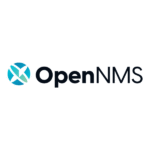Falco — Kernel-Level Threat Detection That Doesn’t Guess
Some security tools operate after the fact. Others watch metrics and hope something stands out. Falco doesn’t wait or guess — it hooks straight into the kernel and watches what processes, containers, and users are doing in real time.
Originally built by Sysdig and now a CNCF project, Falco runs like a silent auditor. It flags behavior, not logs. Reads syscalls. Detects weird command executions, unexpected file writes, or shell access inside containers. No agents. No polling. Just a tight loop around the OS doing what SIEMs often miss.
What It Watches (And What That Means)
| Monitored Behavior | What That Catches |
| Process Activity | Unusual child processes, execs outside expected paths |
| File Access | Writes to sensitive directories, config tampering |
| Network Connections | Unexpected outbound traffic, port scans, DNS anomalies |
| Container Events | Shell spawned inside a container, access to host namespace |
| Privilege Escalation Attempts | sudo where it shouldn’t be, capability use, user switch events |
| Module Loads | Kernel module activity that wasn’t part of the boot plan |
| Binary Injections or Overwrites | Known binaries replaced or memory patterns altered |
Where Falco Ends Up Running
Falco is built for environments where things change fast — and something slipping past the usual checks isn’t a theory, it’s regular Tuesday.
It usually shows up when:
– Containers are everywhere, and the old IDS doesn’t even see them.
– The team needs visibility *inside* the node — not just over the wire.
– Logs arrive too late, and attackers don’t leave easy footprints.
– Compliance requires proof of runtime enforcement, not just scanning tools.
– Someone once said “we had no idea that container was running a shell.”
It’s light enough to run in clusters, smart enough to know when something’s wrong, and quiet enough to stay out of the way until it isn’t.
How It Gets Into the Stack
- Install via Package or Helm
Falco supports native installs for Linux or containerized deployment via Helm charts. Runs well on Ubuntu, CentOS, EKS, GKE, etc.2. Syscalls Through eBPF or Kernel Module
Depending on the environment, Falco attaches to the kernel via a module or modern eBPF. No userland guesswork.3. Default Ruleset Included
Starts with a broad rule pack — basic alerts for common suspicious activity. Easy to trim or extend.4. Customize Rules as Needed
YAML-based syntax. Filter by process path, user, command, syscall, container image — flexible and readable.5. Send Alerts Anywhere
Stdout, file, syslog, gRPC, or to systems like Fluentd, Elasticsearch, or Prometheus.6. Tune It, Don’t Babysit It
False positives are a thing, but tuning takes minutes — not weeks. Once dialed in, Falco runs clean.
Final Word
Falco doesn’t replace EDR, doesn’t pretend to be a firewall, and won’t give you dashboards with pretty colors. It does one thing well: watches the guts of Linux and containers for suspicious moves in real time — and shouts when something breaks pattern.
It’s the kind of tool that earns its keep silently — until the day it saves a lot of explaining.






